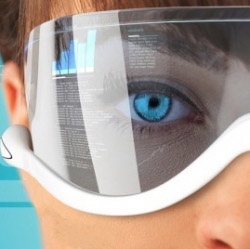
Todd Humphreys and his students at the University of Texas in Austin are tired of waiting for augmented reality that meets the promise of the technology we’ve been hearing about and seeing in science fiction for years now. So they set out to build it themselves, and presented a very rough prototype for the first time at the South By Southwest Interactive Festival (SXSW) in Austin on Friday.
The prototype isn’t nearly as lightweight or wearable as Google’s Glass, the augmented reality spectacles that have received lots of buzz lately over their reported consumer release planned for later this year. Instead, it’s about the size of a desktop computer with a big, round antenna attached to the top of the box.
But as Humphreys told the SXSW crowd, it’s not meant to be an elegantly designed consumer product, but rather a proof of concept for how good augmented reality could (and should) be.
"Google Glass is not the immersive experience I’m looking for," Humphreys told the audience in a conference room of Austin’s downtown Omni Hotel.
He then laid out what he calls an augmented reality "Bill of Rights," outlining what he sees as the real promise of AR, which includes a "true three-dimensional immersive experience" with virtual elements that look and behave as if real, creating a "convincing illusion." Further, Humphreys wants to see absolute location registration (geolocation) accurate down to the centimeter, or even millimeter, no matter where a person is on the globe, outdoors and indoors.
Humphreys’ final demand for this next generation of augmented reality – it should be available soon; no waiting another decade for the experience Arnold Schwarzenegger and the Terminator series introduced us to in the last century.
